Halloween is approaching. Most people outside of America know about Halloween from the movies but the idea is starting to catch on with varying degrees of success. Last year during Halloween, we were in a small town in Sicily. A small group of young boys were trying to go trick or treating (“dolcetto o scherzetto“) and were greeted by baffled older people, questioning their intentions.
This year we are in Piemonte, where I spied a Halloween menu at Eataly which captured the playful spirit of Halloween and “trick or treat”. The menu consisted of many savoury dishes made to look like desserts such as tiramisu and cannoli. The lone dessert on the menu was “salame di cioccolato” – chocolate and hazelnut paste wrapped up and presented as a salami.

Chocolate “salami”
Italians celebrate the Catholic holidays of All Saint’s Day (Ognissanti) on November 1st and Day of the Dead / All Soul’s Day (Giorno dei Morti / Commerazione dei Defunti) on November 2nd, both of which are related in origin to Halloween. These holidays are celebrated differently however with a family meal for All Saint’s Day and a visit to the cemetery and remembrance of deceased loved ones for All Soul’s Day. There are of course, special foods associated with these days based on seasonal ingredients such as pumpkin, chestnuts, cabbage, pork, broad beans (fava beans), chickpeas and dried fruit. Desserts such as pane dei santi (focaccia with raisins, figs and walnuts) and castagnaccio (a dense chestnut flour cake) are served for All Saint’s Day.
For All Soul’s Day, the legend goes that the dead come back to visit the living who prepare sweets for them. Typically biscuits are baked but specialties vary by region. The most typical dessert in Tuscany is dolce dei morti, baked fingers made of flour, yeast, cinnamon, boiled chestnuts, almonds, pine nuts, vanilla and raisins. In Sicily, children are left presents and sweets at night by the ghosts of relatives. Typical sweets include elaborate candy dolls (pupi di zucchero), marzipan painted to resemble fruit (frutta di Martorana/ pasta reale) or ossa da morto (biscuits flavoured with cinnamon and cloves and made to resemble cross bones).

Frutta Martorana (marzipan fruits)
In Massa Carrara, food is distributed to people in need and children wear necklaces made of apples and boiled chestnuts. In Abruzzo has the same Halloween tradition as the Americans of carving a pumpkin and making it into a lantern. In Sardegna, they make pabassinas (small cookies flavoured with raisins, almonds, walnuts, orange zest, aniseed and nutmeg and bruised with cooked wine must and confetti sugar). All over Italy they eat fave dei morti / fave dolci (deadman’s broad beans) which are biscuits flavoured with almonds and sometimes lemon, pine nuts, cinnamon or grappa which are made to resemble broad beans. Broad beans are associated with the dead because the Romans thought that the long roots of the broad bean plant were a link to the underworld/afterlife (guarded by the Roman Gods Persephone and Hades).

Biscuits: Pabassinas (left) and Amarettos (right)
Sicily has a long history of elaborate desserts as sugar was introduced to Europe by the Arabs arriving first in Sicily. Sicily has been famous for hundreds of years for its sugar craft, particularly almond paste. The nunneries have a long tradition in making pastry and sweets, each with its own speciality whose recipe is jealously guarded. Frutta Martorana is made most famously by the nuns of the Martorana convent in Palermo for which it is named.

Martorana church, Palermo
My sons loved making marzipan fruits (and vegetables) for All Soul’s Day last year at the Planeta estate in Menfi. This recipe for the almond paste comes from Maria Grammatico, one of Sicily’s finest bakers who grew up in a convent from the age of 11. She says the key to this recipe is to buy whole almonds and freshly grind them so that they do not become dry. It is easy to make the dough if you have a food processor or Thermomix.
Frutta Martorana / Pasta Reale (marzipan fruits)
Makes 800 grams or 16 pieces
300 grams almonds, marcona preferrably
400 grams caster sugar
75 ml water
1 envelope vanilla powder (can substitute 1/4 teaspoon vanilla extract)
5 ml (1 teaspoon) almond extract
powdered sugar
food colouring
Special equipment: moulds shaped like fruit and vegetables (some chocolate moulds or play doh moulds may be suitable), paint brushes to be used for food only
In a food processor, finely grind the almonds with 30 grams of the caster sugar. Mix in the remaining sugar and the vanilla, adding the water, bit by bit until the dough becomes smooth and soft.
Sprinkle a table top (preferably cold) with powdered sugar and knead the dough by hand. Wrap in cling film until ready to use.
Clean your moulds.
Dust your hands with cornflour. Knead the dough a bit to make it pliable.
Wrap the mould in cling film to ensure it is easy to remove. Push the dough into the mould.
Pull the cling film to pop the dough out.
Trim any edges with a sharp knife.
Leave the dough to dry for at least 30 minutes and preferably overnight.
Dip the paint brush into the food colouring, blot the brush on paper and paint the dough. If you would like a darker colour, then allow it to dry for 4 to 12 hours and add another coat. The more coats of colouring you add the darker the colour. To make fruit appear fuzzy, dip cotton wool into cornflour and brush it on the coloured marzipan.
Leave to dry until dry to handle.
What Halloween or All Soul’s Day treats are you making with your children?
If you enjoyed this post, please share with friends and family.

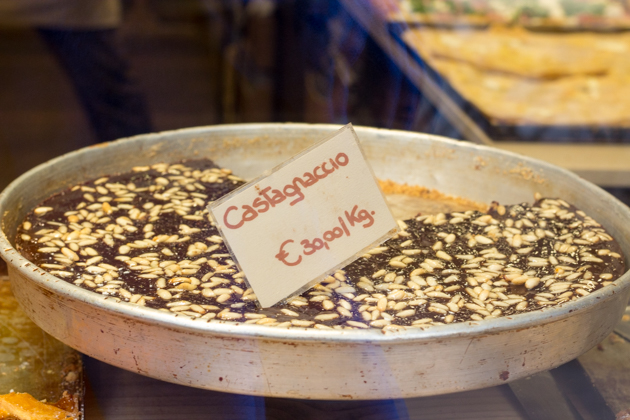

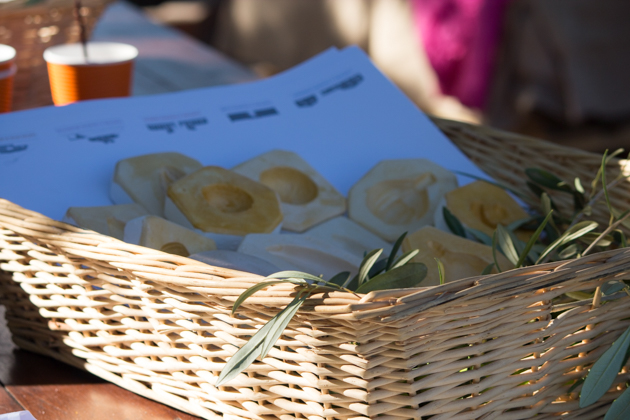



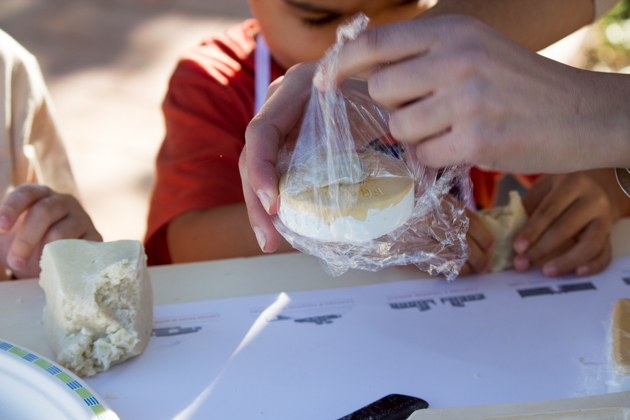




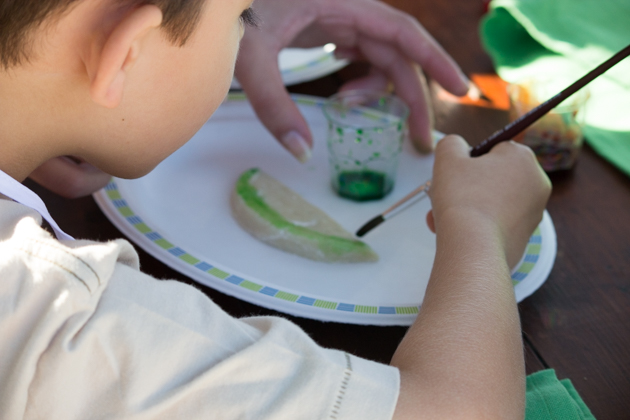



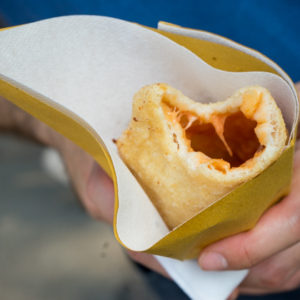

Correction: Maria Grammatico is not a former nun. She was raised in a convent, along with her sister, because her impoverished parents were no longer able to care for the two girls. It was in the convent that she learned to make fruity della Martorana, which you describe so lovingly, but she was never a nun.
Thanks for this correction and for reading my blog. You are completely correct. I think I assumed that she was a nun as she left the convent after 15 years at the age of 26 years old. I don’t know much about how convents function to be honest. The section of her book which says she didn’t become a nun wasn’t that obvious to me as it says the nuns had a relatively more comfortable life but that Maria wasn’t “acquiescent”. Thank you for pointing this out. I really appreciate it. I will update the page.